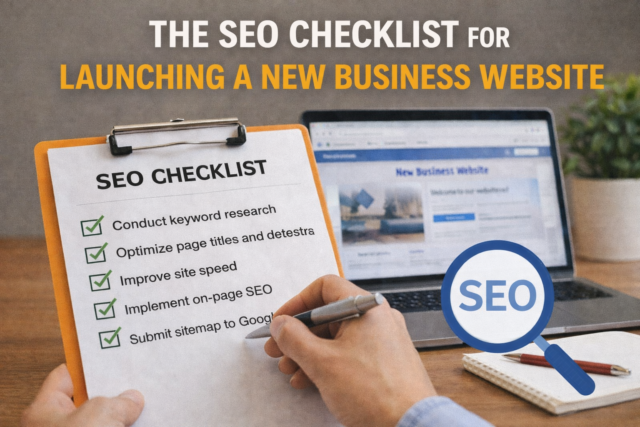Imagine a bustling marketplace where advertisers and publishers interact not through manual negotiations but through a lightning-fast, automated system. This is the world of programmatic advertising, a revolutionary approach that has transformed digital advertising.

\If you’re new to online marketing, programmatic advertising might sound complex. But fear not! This beginner’s guide will break down this powerful tool’s key concepts, benefits, and considerations.
What is Programmatic Advertising?
Programmatic advertising is like having a super-smart assistant for your marketing campaigns. It uses algorithms and data to automate the buying and selling of ad space in real-time. Instead of negotiating deals with publishers manually, programmatic advertising platforms do the heavy lifting for you, ensuring your ads reach the right people at the right time.
How Does Programmatic Advertising Work?
Imagine browsing the internet, looking for a new pair of shoes. You visit a few online stores and add some items to your cart, but then get distracted and leave without purchasing. Later, when you’re scrolling through your favorite news website, you notice something interesting – an ad showcasing the exact pair of shoes you were eyeing earlier. That’s programmatic advertising in action.
Here’s a simplified breakdown of how it works:
- Data Collection: Every time you browse the web or use a mobile app, data about your behavior is collected. This includes information like your browsing history, demographics, and interests.
- Real-Time Bidding (RTB): When you visit a website with available ad space, an auction occurs in the blink of an eye. Advertisers bid to show you their ads based on your data and their set criteria.
- Ad Serving: The winning bid’s ad is then displayed to you in real-time, seamlessly integrated into your website or app.
Why Programmatic Advertising Matters
- Precision Targeting: With programmatic advertising, you can accurately target specific demographics, interests, and behaviors. This means your ads are more likely to reach people genuinely interested in what you offer.
- Optimized Campaigns: Programmatic platforms continuously analyze data to optimize real-time campaign performance. This allows advertisers to make informed decisions and adjust their strategies on the fly for maximum effectiveness.
- Cost Efficiency: Programmatic advertising eliminates the need for manual negotiations and reduces wasted ad spend by automating the ad buying process. Advertisers can set budgets and bid strategically to get the most bang for their buck.
- Personalized Experiences: Programmatic advertising enables advertisers to deliver personalized experiences to consumers based on their preferences and behaviors. This enhances the user experience and increases the likelihood of conversion.
Benefits of Programmatic Advertising:
Here’s a breakdown of the key benefits of programmatic advertising with a more detailed explanation for each:
1. Precision Targeting:
Programmatic advertising goes beyond traditional demographics and utilizes vast user data to reach highly specific audiences. This includes factors like:
- Demographics: Age, gender, income, location, etc.
- Interests: Browsing history, online behavior, app usage, etc.
- Purchase Intent: User searches, product views, shopping cart abandonment, etc.
- Life Events: Recent marriages, births, relocations, etc.
By leveraging this data, programmatic platforms can identify individuals most likely to be interested in your product or service, significantly increasing the chances of successful conversions. Imagine showing ads for baby products only to new parents or gym memberships only to individuals searching for fitness content. This level of targeting precision allows you to maximize the effectiveness of your ad spend.
2. Increased Efficiency:
Programmatic advertising automates the entire ad-buying process, eliminating the need for manual negotiations and placement selection. This translates to:
- Reduced Time Commitment: No more hours spent contacting publishers, negotiating rates, and managing placements.
- Real-Time Optimization: Algorithms constantly analyze campaign performance and automatically adjust bids and placements for optimal results.
- Streamlined Reporting: Detailed analytics dashboards provide real-time insights into campaign performance, allowing you to make informed decisions and continuously optimize your strategy.
This automation frees up valuable time and resources, allowing you to focus on other aspects of your marketing strategy while programmatic platforms handle the heavy lifting.
3. Cost-Effectiveness:
Programmatic advertising ensures you only pay for what you get. Here’s how it achieves cost-effectiveness:
- Real-Time Bidding: Advertisers compete in real-time auctions for impressions, ensuring you only pay the minimum amount necessary to reach your target audience.
- Reduced Ad Waste: By targeting specific users, you minimize the risk of your ad reaching irrelevant audiences, eliminating wasted impressions and maximizing your return on ad spend (ROAS).
- Budget Flexibility: Programmatic platforms allow you to set clear budget limitations and adjust them as needed, ensuring you stay within your financial constraints.
This precise control over your budget helps you stretch your advertising dollars further and achieve a higher return on investment.
4. Greater Transparency:
Programmatic advertising offers unprecedented transparency into your campaign performance. You gain access to:
- Detailed Reporting: Comprehensive data on impressions, clicks, conversions, and other key metrics allow you to track campaign performance in real time.
- Attribution Insights: Understand which channels and ad formats drive the most conversions, enabling you to optimize your strategy for maximum impact.
- Fraud Detection: Advanced algorithms help identify and prevent fraudulent clicks and impressions, ensuring your budget is used effectively.
This level of transparency empowers you to make data-driven decisions and continuously refine your campaigns for optimal results.
5. Scalability:
Programmatic advertising offers unparalleled reach and scalability. Here’s how:
- Vast Network: Access to a massive network of websites and apps, allowing you to reach a wider audience than ever before.
- Flexible Budget Allocation: You can easily adjust your budget based on campaign goals and performance, scaling your reach up or down as needed.
- Global Reach: Programmatic platforms operate globally, enabling you to target audiences across different countries and regions.
This scalability allows you to adapt your advertising efforts to your specific needs and reach your target audience wherever they are.
Getting Started with Programmatic Advertising
- Define Your Goals: Before pursuing programmatic advertising, it’s essential to define your goals and objectives clearly. Whether you’re seeking to increase brand awareness, drive website traffic, or boost sales, having a clear roadmap will guide your strategy.
- Choose the Right Platform: There are countless programmatic advertising platforms, each with its features and capabilities. Take the time to research and choose a platform that aligns with your goals and budget.
- Create Compelling Ads: Once you’ve selected your platform, it’s time to update your ads. Ensure your creatives are eye-catching, engaging, and relevant to your target audience. A/B testing can help you refine your ads for optimal performance.
- Monitor and Optimize: Once your campaigns are live, don’t just don’t forget it. Keep a close eye on your metrics and performance data, and be prepared to make adjustments as needed. Continuous optimization is key to maximizing your ROI.
Key Players in the Programmatic Ecosystem:
- Demand-Side Platforms (DSPs): These platforms allow advertisers to manage their programmatic campaigns, set bidding strategies, and target specific audiences.
- Supply-side platforms (SSPs) connect publishers with advertisers, allowing them to sell their ad inventory programmatically.
- Ad Exchanges: These platforms act as marketplaces where DSPs and SSPs connect, facilitating real-time bidding for ad impressions.
- Data Management Platforms (DMPs) collect and analyze user data, providing valuable insights for targeted advertising.
Is Programmatic Advertising Right for You?
Programmatic advertising offers significant advantages for businesses of all sizes. However, it’s essential to consider the following:
- Campaign Goals: Programmatic advertising excels at driving specific actions like website visits, lead generation, or app downloads. If your goal is brand awareness, traditional methods might be more suitable. Additionally, it’s important to assess your budget and resources to ensure that you can effectively leverage programmatic advertising to achieve your marketing objectives.
- Budget: While programmatic advertising can be cost-effective, setting realistic budget expectations is crucial to ensure a successful campaign. It’s important to understand the costs associated with programmatic advertising, including platform fees and ad placement costs, to determine if it aligns with your budget.
- Technical Expertise: While platforms are user-friendly, some technical understanding benefits campaign management and optimization. Additionally, the target audience and how they interact with different types of advertising should be considered. It’s also important to regularly analyze and adjust your campaign to ensure optimal performance.
Endnotes
Programmatic advertising has transformed digital advertising, offering unprecedented targeting capabilities, efficiency, and personalization. By harnessing the power of data and automation, advertisers can reach their target audience with precision and effectiveness like never before. Whether you’re a business owner or a marketing professional, understanding the basics of advertising is essential for staying ahead in today’s comptoday’s marketplace. So, dive in, experiment, and discover the endless possibilities of programmatic advertising for your business.
For more information on programmatic advertising, visit Digital Maxima. They are a digital marketing agency that offers various services, including programmatic advertising.





